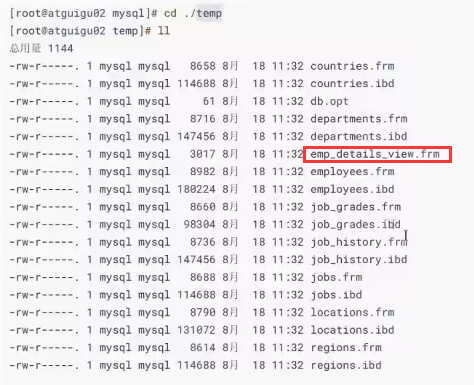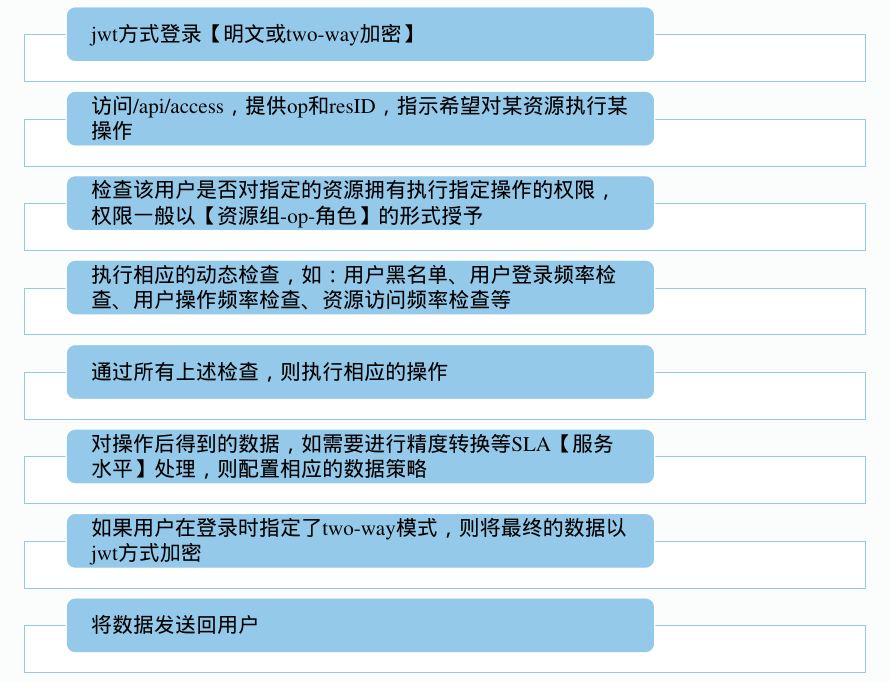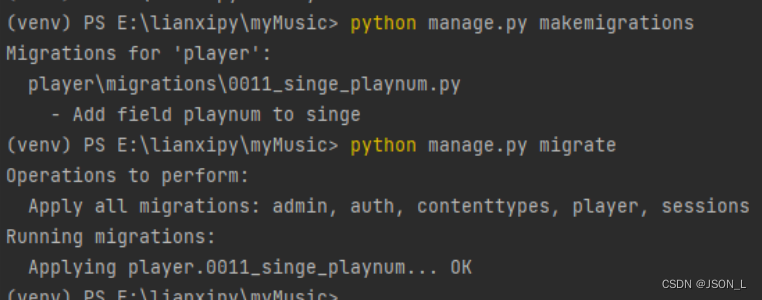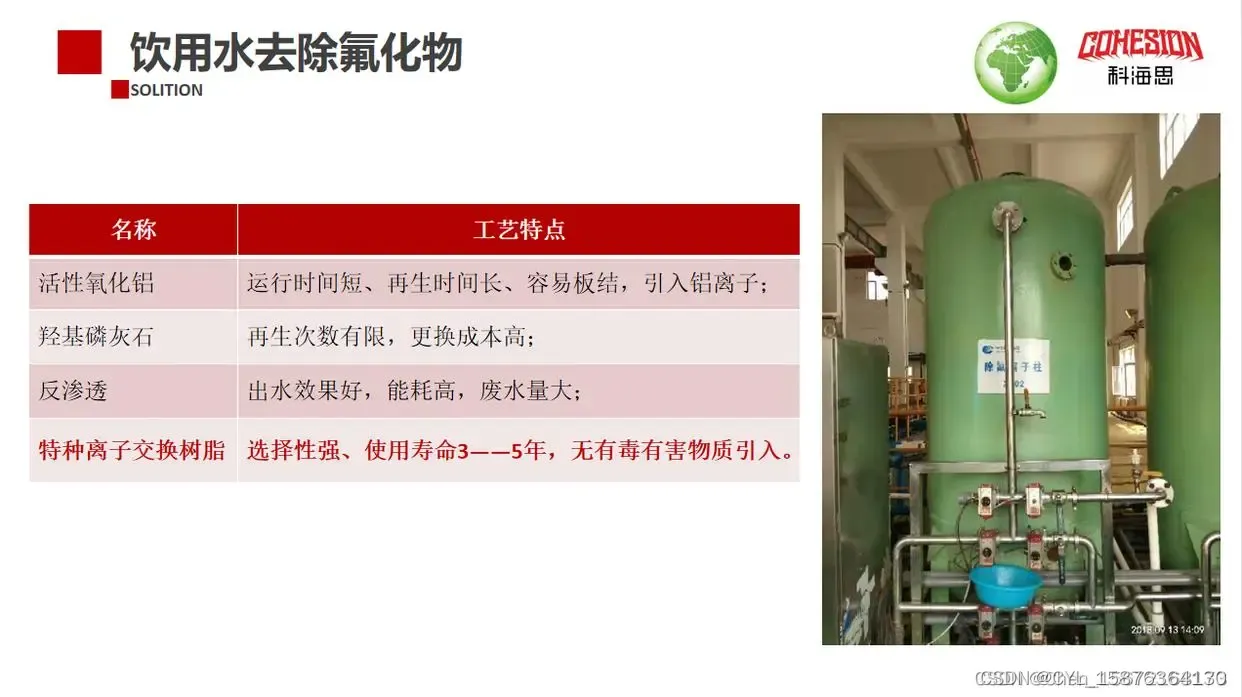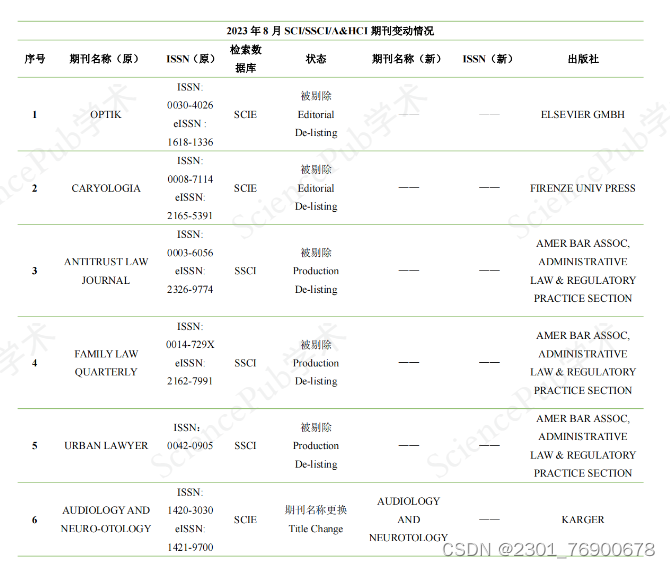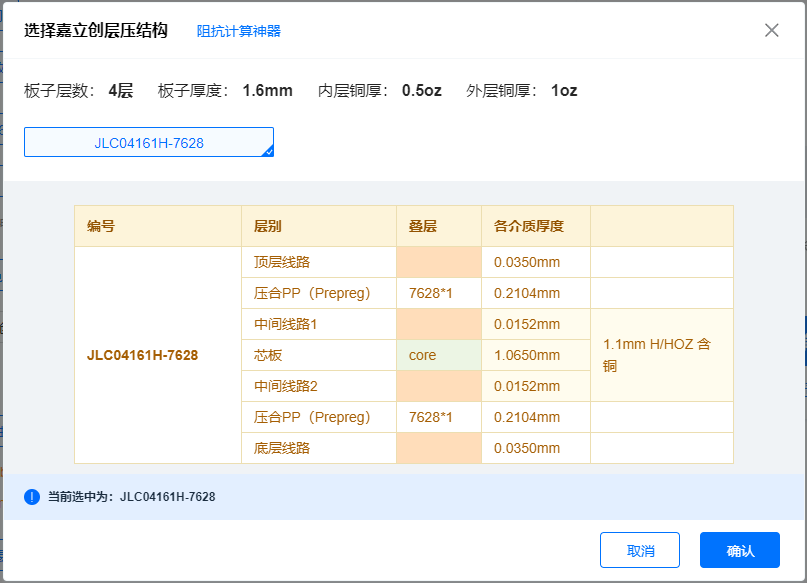文章目录
- 前言
- 一、查找字串
- 二、返回字串
- 三、交换字串
- 四、运算符重载
- 总结
前言
本STL使用VS2022+C++20版本
C++标准库(Standard Template Library,简称STL)是C++中非常强大和常用的一组容器、算法和函数模板,它能大大简化程序开发和提高开发效率。在STL中,string类是对字符串进行处理的重要组成部分。本文将向您介绍string类的三个基本操作:查找子串(find)、返回子串(substr)和交换操作(swap),帮助您更好地理解和应用这些功能。
一、查找字串
1、size_type find( const basic_string &str, size_type index );
此函数用于在字符串中查找给定子串 str 的第一个位置。它接收两个参数:str 是要查找的子串,index 是在哪个位置开始搜索。函数返回找到的子串的第一个字符的索引位置,如果找不到子串,则返回 string::npos。
示例代码:
#include <iostream>
#include <string>
int main() {
std::string str = "Hello, world!";
std::string sub = "world";
size_t found = str.find(sub, 0); // 在整个字符串中搜索
if (found != std::string::npos) {
std::cout << "子串 " << sub << " 在索引位置 " << found << " 处被找到。" << std::endl;
} else {
std::cout << "未找到子串 " << sub << "。" << std::endl;
}
return 0;
}
输出:

2、size_type find( const char *str, size_type index );
此函数用于在字符串中查找给定 C-风格字符串 str 的第一个位置。它接收两个参数:str 是要查找的C-风格字符串,index 是在哪个位置开始搜索。函数返回找到的子串的第一个字符的索引位置,如果找不到子串,则返回 string::npos。
示例代码:
#include <iostream>
#include <string>
int main() {
std::string str = "Hello, world!";
const char* sub = "world";
size_t found = str.find(sub, 0); // 在整个字符串中搜索
if (found != std::string::npos) {
std::cout << "C-风格字符串 " << sub << " 在索引位置 " << found << " 处被找到。" << std::endl;
} else {
std::cout << "未找到 C-风格字符串 " << sub << "。" << std::endl;
}
return 0;
}
输出:
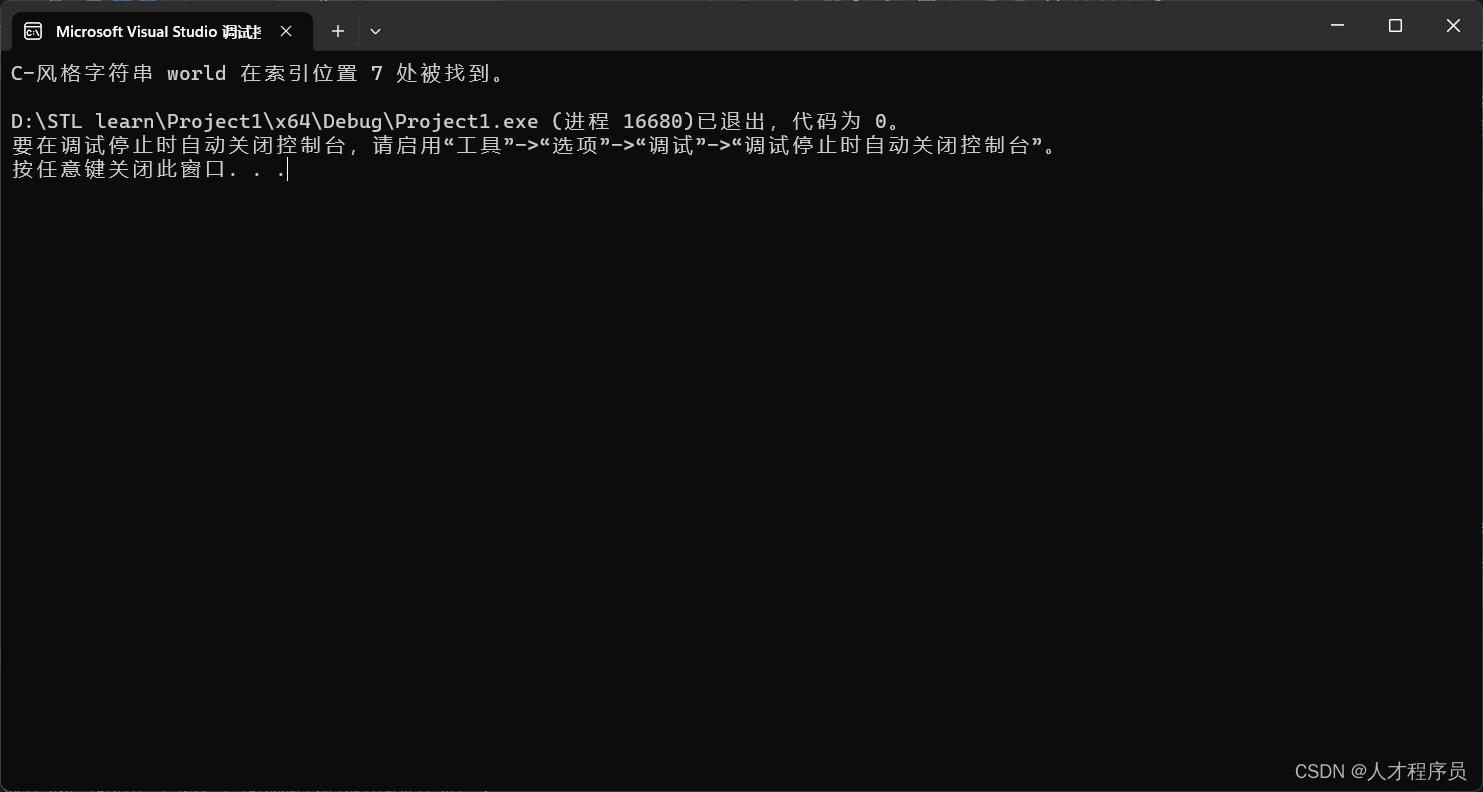
3、size_type find( char ch, size_type index );
此函数用于在字符串中查找给定字符 ch 的第一个位置。它接收两个参数:ch 是要查找的字符,index 是在哪个位置开始搜索。函数返回找到的字符的索引位置,如果找不到字符,则返回 string::npos。
示例代码:
#include <iostream>
#include <string>
int main() {
std::string str = "Hello, world!";
char ch = 'o';
size_t found = str.find(ch, 0); // 在整个字符串中搜索
if (found != std::string::npos) {
std::cout << "字符 " << ch << " 在索引位置 " << found << " 处被找到。" << std::endl;
} else {
std::cout << "未找到字符 " << ch << "。" << std::endl;
}
return 0;
}
输出:
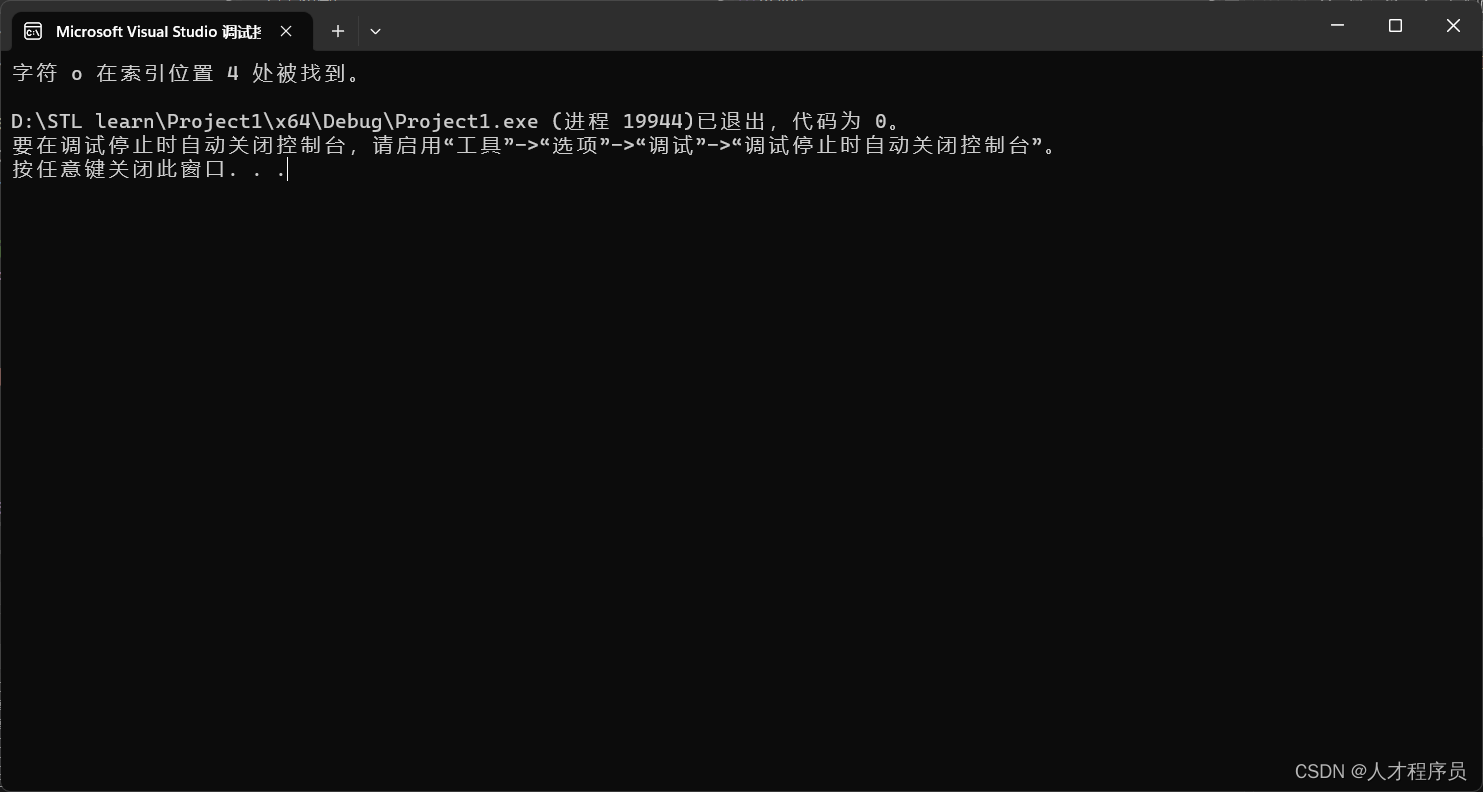
二、返回字串
1、substr( size_type index, size_type num = npos );
此函数用于截取原字符串的子串,并返回新的字符串作为结果。它接收两个参数:index 是要开始截取的索引位置,num 是要截取的字符数。参数 num 是可选的,如果未提供,则默认截取从 index 一直到字符串末尾的所有字符。函数的返回类型是 basic_string。注意,index 参数必须在有效范围内,否则可能会导致未定义行为。
示例代码:
#include <iostream>
#include <string>
int main() {
std::string str = "Hello, world!";
std::string sub1 = str.substr(7); // 从索引位置 7 开始截取到字符串末尾
std::cout << "截取子串1: " << sub1 << std::endl;
std::string sub2 = str.substr(7, 5); // 从索引位置 7 开始截取 5 个字符
std::cout << "截取子串2: " << sub2 << std::endl;
return 0;
}
输出:
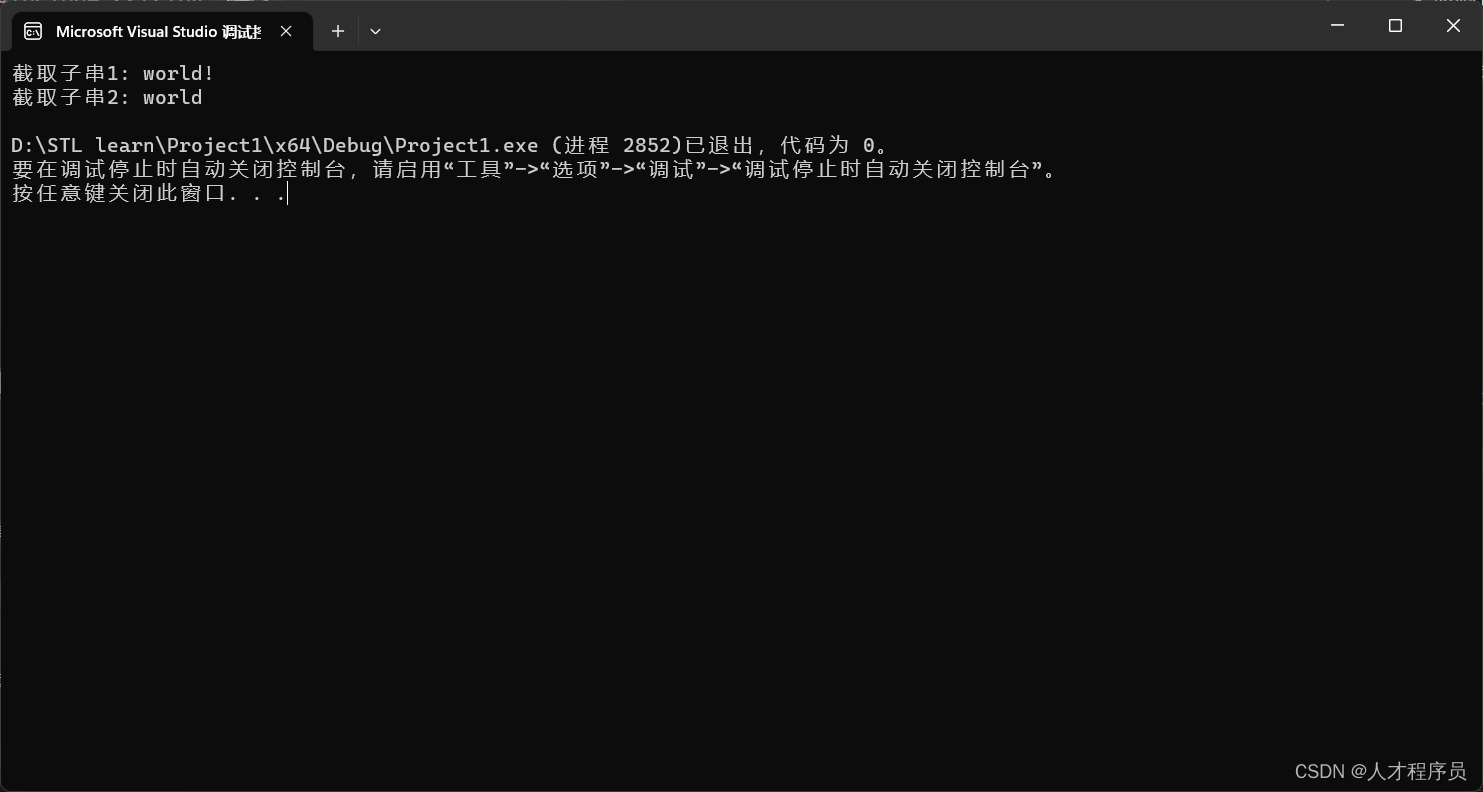
三、交换字串
1、swap( basic_string &str );
此函数用于交换两个字符串的内容。它接收一个参数 str,是要交换内容的另一个字符串。该函数不返回任何值,它直接修改了原字符串和传入的字符串。
示例代码:
#include <iostream>
#include <string>
int main() {
std::string str1 = "Hello";
std::string str2 = "World";
std::cout << "交换前:" << std::endl;
std::cout << "str1: " << str1 << std::endl;
std::cout << "str2: " << str2 << std::endl;
str1.swap(str2); // 交换字符串内容
std::cout << "交换后:" << std::endl;
std::cout << "str1: " << str1 << std::endl;
std::cout << "str2: " << str2 << std::endl;
return 0;
}
输出:

四、运算符重载
1、输入输出
<<:用于将字符串输出到流中。
>>:用于从流中读取字符串。
示例代码:
#include <iostream>
#include <string>
int main() {
std::string str;
// 从标准输入读取字符串
std::cout << "请输入一个字符串:";
std::cin >> str;
// 将字符串输出到标准输出
std::cout << "输入的字符串为:" << str << std::endl;
return 0;
}
2、下标运算
下标运算符 []:
用于访问字符串中指定索引位置的字符。
示例代码:
#include <iostream>
#include <string>
int main() {
std::string str = "Hello";
// 访问字符串中的第一个字符
char firstChar = str[0];
std::cout << "第一个字符为:" << firstChar << std::endl;
return 0;
}
3、赋值
+=:用于将右侧字符串附加到左侧字符串。
=:用于将右侧字符串赋值给左侧字符串。
示例代码:
#include <iostream>
#include <string>
int main() {
std::string str1 = "Hello";
std::string str2 = " World!";
// 使用+=将两个字符串连接起来
str1 += str2;
std::cout << "连接后的字符串为:" << str1 << std::endl;
// 使用=将str2赋值给str1
str1 = str2;
std::cout << "赋值后的字符串为:" << str1 << std::endl;
return 0;
}
4、比较
==
>
<
>=
<=
!=
用于比较两个字符串的大小关系。
示例代码:
#include <iostream>
#include <string>
int main() {
std::string str1 = "Hello";
std::string str2 = "World";
// 比较两个字符串是否相等
if (str1 == str2) {
std::cout << "字符串相等" << std::endl;
} else {
std::cout << "字符串不相等" << std::endl;
}
// 比较两个字符串的大小关系
if (str1 > str2) {
std::cout << "str1 大于 str2" << std::endl;
} else if (str1 < str2) {
std::cout << "str1 小于 str2" << std::endl;
} else {
std::cout << "str1 等于 str2" << std::endl;
}
return 0;
}
5、计算
+用于将两个字符串进行连接。
示例代码:
#include <iostream>
#include <string>
int main() {
std::string str1 = "Hello";
std::string str2 = " World!";
// 将两个字符串进行连接
std::string result = str1 + str2;
std::cout << "连接后的字符串为:" << result << std::endl;
return 0;
}
总结
在本文中,我们深入浅出地介绍了C++ STL中的string类的三个基本操作:查找子串(find)、返回子串(substr)和交换操作(swap)。通过使用这些操作,您可以方便地在字符串中查找子串、提取子串并交换字符串内容。这些功能为您处理字符串提供了便利,可以增加程序的灵活性和功能。
希望通过这篇文章,您能更好地理解和掌握C++的STL中的string类的操作,并在实际开发中灵活运用。祝您编程愉快!

